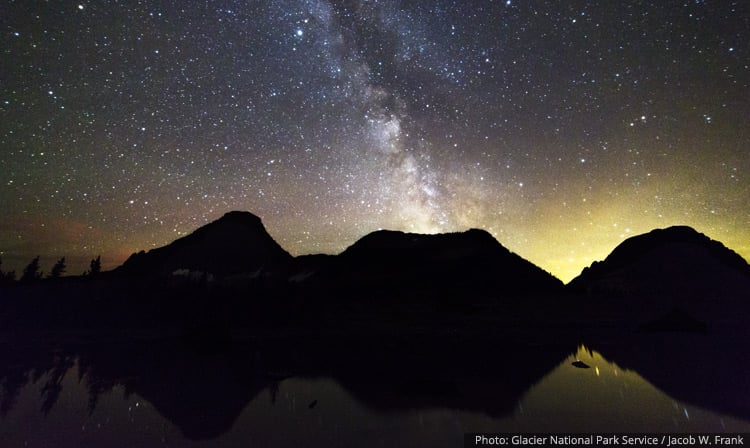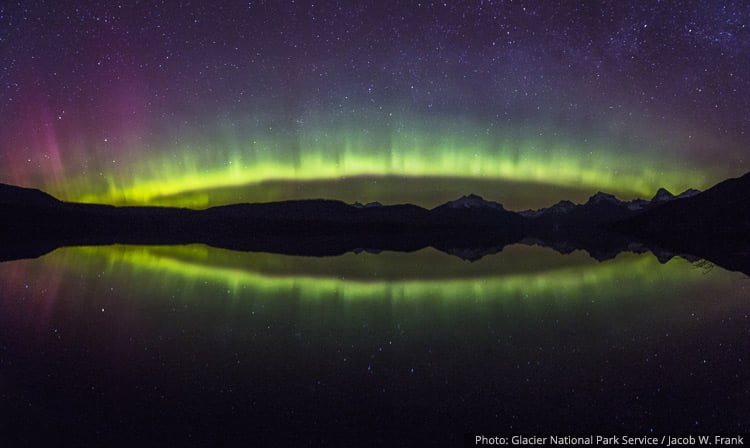Each night, the setting sun blankets the wilderness of Glacier National Park, transforming the remote landscape and striking visage of soaring peaks into a sweeping canvas of stars.
From Logan Pass to Lake McDonald, visitors with even the most basic telescopes can witness the vast labyrinth of planets and constellations. Nighttime presents a side of Glacier that’s just as vivid and awe-inspiring as its famous daylight counterpart.
Glacier Park is well known as a hiker’s paradise, but it’s increasingly becoming a destination for stargazers seeking an unrivaled perspective. Glacier is home to some of the darkest skies in the world, a unique designation that became official in 2017. The International Dark Sky Association named Glacier Park and its Canadian neighbor, Waterton Lakes National Park, the world’s first transboundary international Dark Sky Park.
Glacier, Waterton and its partners, including Glacier Park Collection, have been global leaders in protecting the natural night sky from light pollution and raising awareness about dark skies as a critical natural resource. An estimated 80 percent of the United States’ population lives in areas without the ability to see a true dark sky, and only one-third of people around the world can clearly see the Milky Way.

To protect the darkness and maintain the designation, the National Park Service and its partners were required to follow strict lighting standards and ensure at least 67 percent of the lights within Glacier were night-sky friendly.
At its various facilities in and around the parks, Glacier Park Collection has followed a policy of only using outdoor lighting when necessary, and those lights are only illuminated to a certain degree. All lights are also shielded to ensure illumination is pointed downward.
Dark skies are vital for human health and enjoyment but also play an important role in the landscape. Unnatural light can disrupt wildlife migration, hunting routines and other natural processes, putting creatures at risk. Night skies are also important culturally, featuring prominently in Indigenous creation stories and ways of life in Montana since time immemorial.
Just about anywhere in the park, you’ll find stunning skies and opportunities to witness thousands of stars, planets and galaxies.
Some popular spots to consider for your stargazing session include Apgar Village, Logan Pass or the shorelines of either Lake McDonald or St. Mary Lake. Another popular activity involves driving up Going-to-the-Sun Road at night to experience the spectacular view of a full moon or the meandering northern lights.
To showcase the night skies, Glacier Park rangers also host popular viewing events during summer at various locations. Check what’s happening during your visit and for a chance to take a guided tour of the cosmos.

The dark sky designation further bonds Glacier and Waterton, which made history as the world’s first International Peace Park.
“In the spirit of the peace park and its history, we’re especially pleased that dark skies are a shared resource that furthers the sense of amity and goodwill between the United States and Canada,” said J. Scott Feierabend, executive directory of the International Dark Sky Association at the time of the designation. “The new Dark Sky Park is the embodiment of the sense that all of humanity shares just one night sky that knows no limit at international boundaries.”